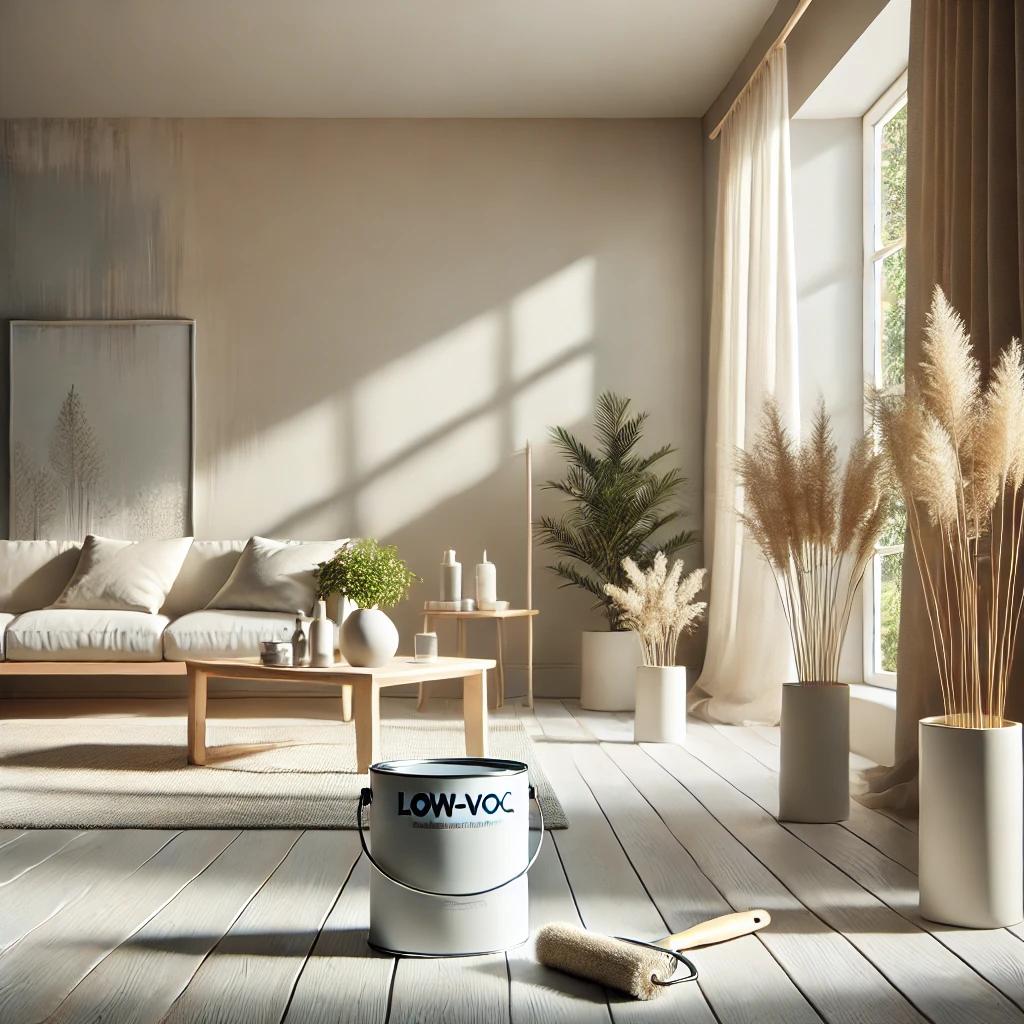As homeowners become more health-conscious and environmentally aware, the demand for safer, eco-friendly products is on the rise. One product at the forefront of this trend is low-VOC paint. Volatile Organic Compounds (VOCs) are harmful chemicals found in many traditional paints, but with low-VOC options, you can achieve beautiful, long-lasting results without compromising health or sustainability. Here’s why low-VOC paint is reshaping residential painting and why it’s here to stay.
1. What Are VOCs, and Why Should You Care?
VOCs are chemicals that easily evaporate into the air during and after the painting process. Common VOCs include formaldehyde, benzene, and toluene, which can have adverse effects on indoor air quality.
Health Risks of VOC Exposure:
- Short-term exposure can cause headaches, dizziness, and eye, nose, or throat irritation.
- Long-term exposure is linked to respiratory issues, liver damage, and certain cancers.
Low-VOC paints significantly reduce or eliminate these harmful emissions, making them a safer option for your home.
2. Environmental Benefits of Low-VOC Paint
Traditional paints contribute to air pollution through the release of VOCs, which react with sunlight to produce ground-level ozone and smog. Switching to low-VOC paints helps reduce these environmental impacts.
Key Environmental Benefits:
- Lower greenhouse gas emissions.
- Reduced air pollution and smog formation.
- Safer disposal and reduced chemical runoff.
By choosing low-VOC paint, you’re making a sustainable decision that benefits the planet.
3. How Low-VOC Paint Enhances Indoor Air Quality
Unlike traditional paints, low-VOC options don’t release harmful fumes that linger for weeks after application. This leads to a healthier living environment, especially in spaces where you and your family spend most of your time.
Why This Matters:
- Immediate occupancy without waiting for harmful fumes to dissipate.
- Reduced risk of allergic reactions and respiratory problems.
- Ideal for homes with children, pets, or individuals with asthma.
4. Debunking Myths About Low-VOC Paint
Myth 1: Low-VOC Paints Don’t Provide Good Coverage
Low-VOC paints have come a long way and now offer excellent coverage and vibrant colors comparable to traditional paints.
Myth 2: They Are More Expensive
While some brands may be slightly more expensive, the long-term health benefits and durability often offset the initial cost.
Myth 3: Limited Color Choices
Low-VOC paints come in a wide range of colors, finishes, and sheens, giving you just as many design options as traditional paints.
5. Applications for Low-VOC Paint
Low-VOC paints are versatile and can be used throughout the home:
- Living rooms and bedrooms: Create a safe and relaxing environment.
- Kitchens and bathrooms: Ideal for high-moisture areas.
- Nurseries and playrooms: Protect children from harmful fumes.
- Furniture and cabinetry: Safe for refinishing projects.
6. How to Choose the Best Low-VOC Paint
Look for Certifications:
- Green Seal: Verifies that the paint meets stringent environmental and health standards.
- Greenguard: Ensures low chemical emissions.
- LEED Compliance: Indicates that the paint contributes to sustainable building practices.
Check VOC Levels:
- Low-VOC paints typically contain fewer than 50 grams of VOCs per liter.
- Zero-VOC paints have less than 5 grams per liter.
Consider the Finish:
- Choose the right finish (matte, satin, semi-gloss) based on the room’s purpose.
7. Cost and Long-Term Savings
While low-VOC paints may have a slightly higher upfront cost, they offer long-term savings due to their durability and health benefits.
Ways You Save:
- Fewer repainting projects due to longer-lasting finishes.
- Reduced medical expenses related to respiratory issues or allergies.
- Increased home value by incorporating sustainable upgrades.
8. The Future of Residential Painting
With increasing regulations on VOC emissions and rising consumer demand for safer alternatives, low-VOC paints are becoming the standard for residential and commercial painting projects.
Emerging Trends:
- Continued innovation in natural, plant-based paint formulas.
- Expansion of color options and finishes.
- Integration with smart home systems to monitor indoor air quality.
Final Thoughts
Low-VOC paint is more than just a trend—it’s a long-term solution for healthier, eco-friendly homes. Whether you’re tackling a small DIY project or a full-scale repaint, choosing low-VOC paint ensures beautiful, durable results without harmful side effects.
Want to explore the best low-VOC options for your home? Contact Perfecting Paint for expert advice and professional painting services.
Request a free estimate and start creating a healthier, greener living space today!

